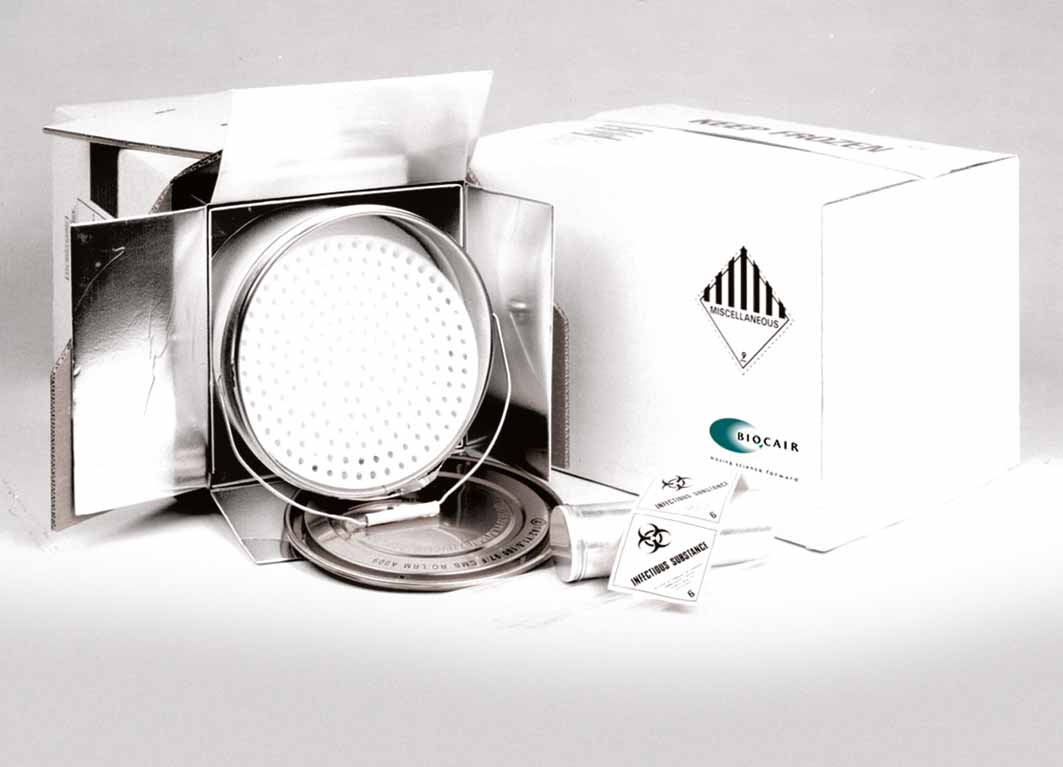The landscape of logistics surrounding biological materials has changed rapidly - as have the regulatory frameworks around it. What has not necessarily kept pace is the end-user understanding of the nature of these logistical processes, their opportunities and their constraints.
The history of biological logistics

Twenty years ago, the transmission of biological and chemical materials was limited to a small range of organisations: usually national and international research companies, hospitals, major university departments, police and military departments with forensic responsibilities.
Today, the field is massive and includes: biotech start-ups, private healthcare facilities, Independent Research Organisations (IROs), Contract Research Organisations (CROs) and a wide range of aesthetics providers. In the UK alone, the number of biopharma companies has risen from 376 to 573 in under a decade and 80% of the UK’s biopharma activity comes from SMEs (Annual Business Survey, ONS). Many of these organisations have been established with a clear focus to develop a specific service or product area, which means they are more specialised than the previous generation of biological logistics users, and also much leaner. The benefit is that they can often move faster, avoiding the layers of administration that slow down big organisations - the downside is that this can mean they end up stymied by bottlenecks that they had not anticipated and do not have immediate in-house expertise to resolve. Logistics can be one such bottleneck.
Managing biological materials for transport
There are five basic steps that should be taken to ensure successful transmission or receipt of biological material.
- Know your admin
Basic but essential! Knowing the nature of the commodity to be shipped, and its purpose at the end destination, can speed any material through the various stages of its journey.
Things to consider are: customs regulations, end use of the material, import/export and other permits and licenses, if the material is hazardous, brokerage documentation, tax and duty declarations and trade tariffs and commodity codes.
While it can sound daunting, specialist support is available from logistics partners to help smaller organisations through the complexities of transporting biological or chemical material. - Pack with care
Knowing the potential hazards of the material being sent or received allows the sender to establish the right packaging for each shipment.
They may need to consider temperature requirements, stability, and tracking systems. Many large organisations have intranet or PDF flow systems to help their staff understand the requirements of each individual shipment, while smaller organisations often rely on the expertise of their logistics partner.
It is also worth considering the environmental impacts of the shipment - could you utilise reusable packaging instead of single use options for temperature-controlled shipments? - Understand your incoterms
These are the rules governing the responsibilities of both buyers and sellers relating to delivery.
Overseen by the International Chamber of Commerce, they operate in most areas of the global marketplace. Recognising the relevant rights and responsibilities helps a business manage its logistics effectively. - Master routing
Getting a shipment to its destination can sometimes be complex. Is it urgent? Are there financial considerations? Does security feature in the decision? Is the route likely to be impacted by temperature considerations? Being clear about shipping routes can prevent delays, which often put the transported commodity at risk. - Make use of traceability
Knowing what information you can gather from a package can help you improve your logistical processes.
GPS tracking allows real-time monitoring of the package, while temperature tracking gives you a clear pattern of the shipment's temperature range during transit. This data can, in turn, help improve decisions about packaging and routes which will create better, faster and/or more robust logistical processes in the future.

‘Discovery outsourcing’ - a proliferating movement of biochem and biopharma
One recent report (BioPharmaTrend) says that drug discovery outsourcing globally will rise from £14.72 billion in 2016 to £33.50 billion by 2026.
This means a continued growth in the movement of materials, not just from a single source organisation to a contract organisation, but from one contract organisation to another, as discovery chains develop and processes are increasingly transferred from a central managing organisation to a stream of specialist outsource partners.
Summary
A surprising number of couriers are becoming increasingly inflexible when it comes to meeting their clients’ requirements.
It is important to select a specialist courier that tailors their services to the clients’ specific needs, however challenging or complex.
Every service that we provide has been designed to make life easier for our customers, minimising the amount of time and effort spent on importing and exporting products, samples and materials. We take all of the hard work out of the life sciences supply chain so that you can focus your efforts on your valuable work rather than on managing logistics.

Shane Iles
Client Relationship Manager, Biocair UK
Based in Cambridge (UK), Shane manages a team of Customer Service and Logistics Specialists. With over 10 years international shipping experience in the pharmaceutical logistics sector, Shane has dealt with a wide range of materials ranging from Non-Hazardous to Dangerous Goods, including Class 7. Shane is also a point of contact for key clients globally who ship internationally and domestically or require shipping advice.
